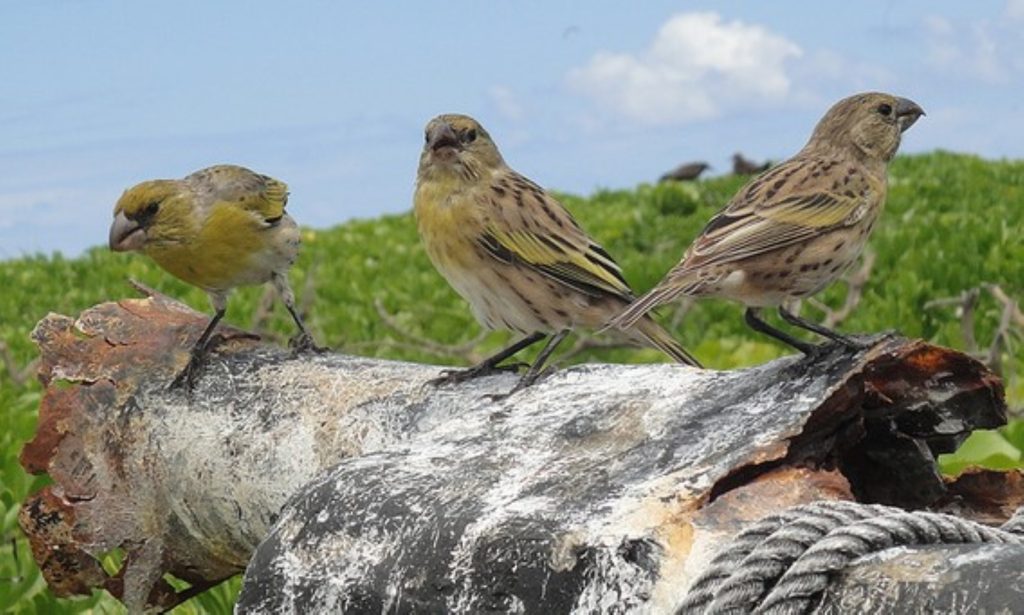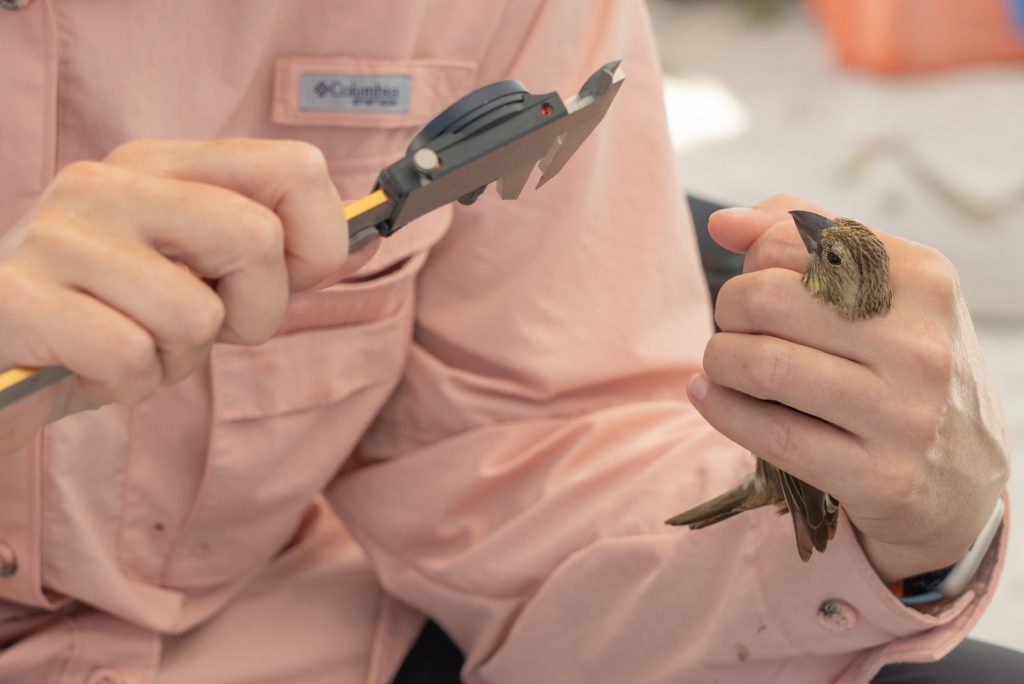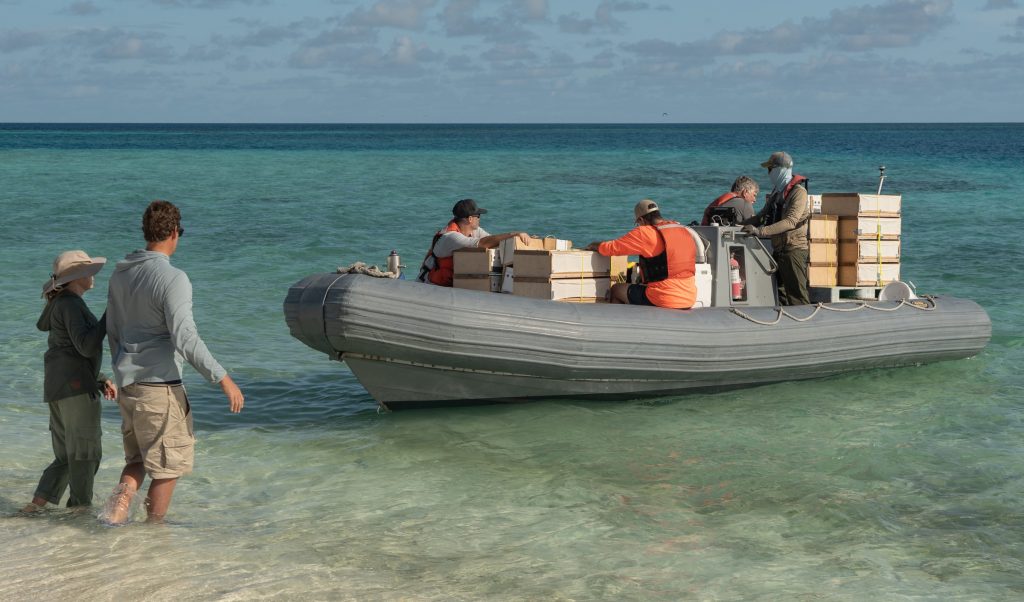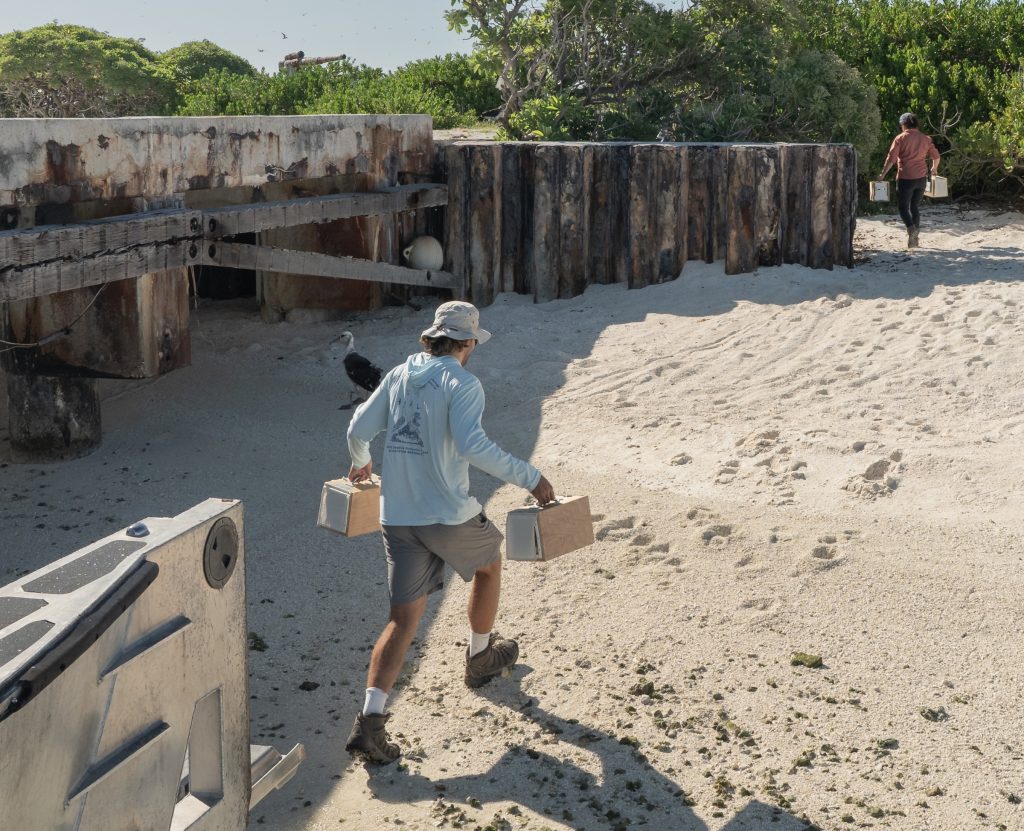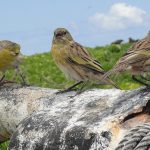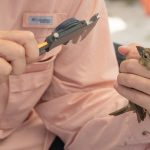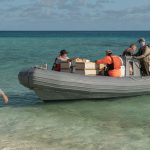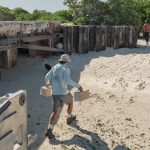Homecoming 8 decades in the making: Laysan finches again grace skies, fields of Midway Atoll
Kuaihelani at the far northern end of the Hawaiian archipelago — in the Northwestern Hawaiian Islands — is once again home to a small endangered native Hawaiian avian species that hasn’t been back for 80 years.
ʻEkupuʻu — the Laysan finch — for the first time in 8 decades grace the fields and skies of Midway Atoll National Wildlife Refuge and Battle of Midway Memorial following U.S. Fish and Wildlife Service staff and their partners releasing 100 of the birds July 21-22 on Eastern Island.
The atoll provides ideal habitat for ʻekupuʻu, with abundant native, nutritious plant seeds and fruits.
A healthy population of Laysan finches once thrived at Kuaihelani until the mid-1940s before they were wiped out because of predation by rats, which were accidentally introduced in 1944 to the atoll.
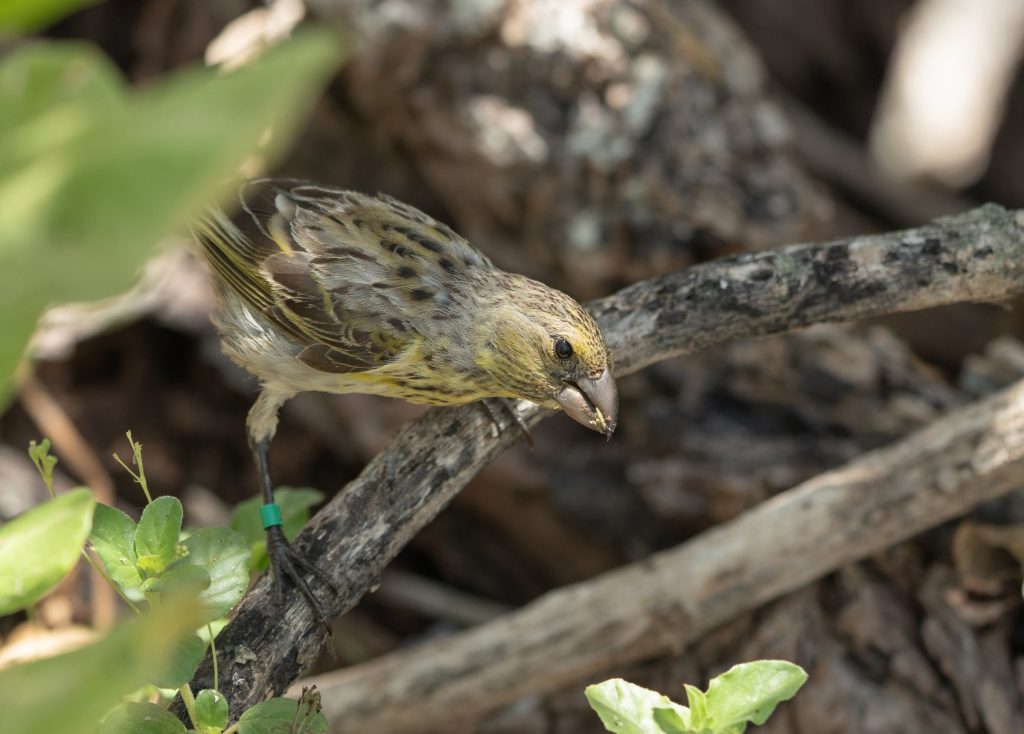
The Laysan finch translocation is part of a continuing plan to re-establish and expand native bird populations endemic to Papahānaumokuākea Marine National Monument in preparation for potential catastrophic events.
A single severe storm, the introduction of an invasive species or a devastating wildfire could wipe out any of the species only found on the island.
“Increasing the population size and range of these endemic species is critical to the survival and recovery of those species,” said Papahānaumokuākea Marine National Monument Superintendent Jared Underwood in an announcement about the release of the finches.
A team of biologists spent more than 4 days selecting and collecting the 100 finches to be released at Kuaihelani from neighboring Manawai — Pearl and Hermes Atoll.
The finches were then banded with a unique set of color bands before being housed on island under the care of expert aviculturists.
They hitched a long 1-day ride for a journey aboard Motor Vessel Imua — already navigating waters within the monument on a National Oceanic and Atmospheric Administration expedition — to Kuaihelani.
“We feel honored and grateful that this particular translocation was brought to fruition thanks to the expertise and dedicated support from 10 different partners from non-governmental organizations, Hawaiʻi academia, state of Hawaiʻi and federal sectors,” said Underwood.
The translocation and its success are results of a collaborative effort that included:
- National Oceanic and Atmospheric Administration Fisheries.
- Papahānaumokuākea Marine National Monument.
- Midway Atoll National Wildlife Refuge/Battle of Midway National Memorial.
- U.S. Fish and Wildlife Service Inventory and Monitoring Program.
- U.S. Fish and Wildlife Service Pacific Island Coastal Program.
- U.S. Fish and Wildlife Service Ecological Services.
- Pacific Rim Conservation.
- U.S. Geological Survey Pacific Island Climate Adaptation Science Center.
- Pacific Bird Conservation.
- Friends of Hawaiian Islands Refuge.
- Hawaiʻi Audubon Society.
- Papahānaumokuākea Cultural Working Group.
- American Bird Conservancy.
- University of Hawaiʻi Vertebrate Introductions and Novel Ecosystem Project.
A team of biologists will monitor the finches to document how they adapt to their now reoccupied and recovered home in the wild.
Twenty of the 100 finches have radio transmitters that will be removed later this year so biologists can more easily track their movements. The other 80 birds are being visually monitored by means of reading their unique color band combination.
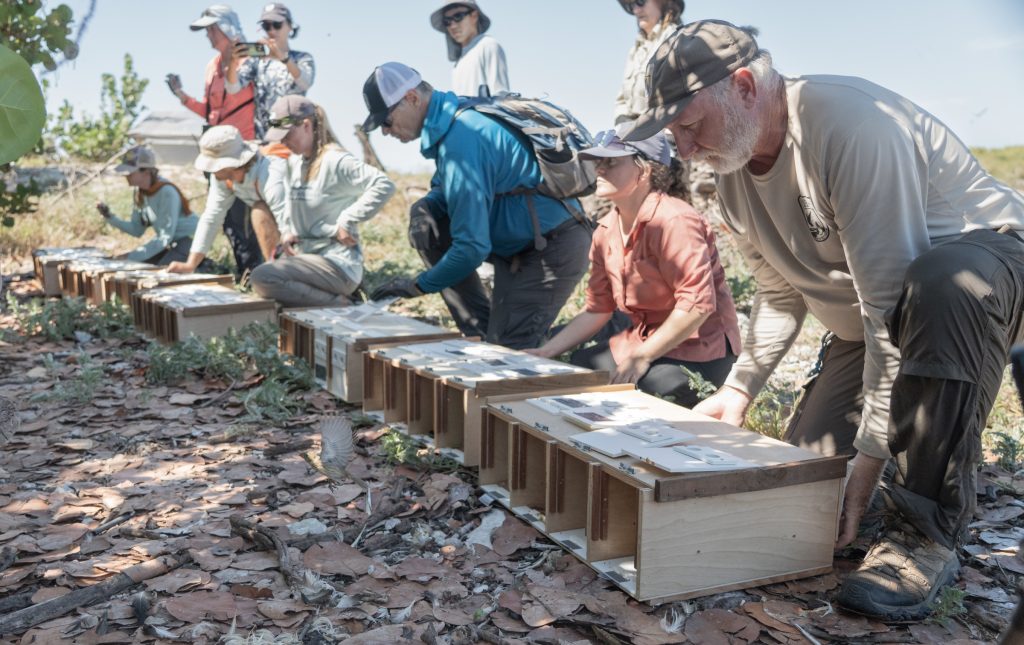
Although ʻekupuʻu were once found in the main Hawaiian Islands centuries ago, threats such as avian malaria and introduced predators make it impossible to return them to their ancestral homes at this time.
Translocations within the Northwestern Hawaiian Islands — protected inside Papahānaumokuākea Marine National Monument — reduce the risk of extinction and provide source populations for species to be returned to the main Hawaiian Islands when the time is right.
U.S. Fish and Wildlife Service will post progress updates about how the ʻekupuʻu are adapting to Kuahelani on the Midway Atoll National Wildlife Refuge and Battle of Midway Memorial website.
U.S. Fish and Wildlife Service works with others to conserve, protect and enhance fish, wildlife, plants and their habitats for the continuing benefit of the American people.
Visit the agency’s website plus connect via Facebook and Flickr for additional information.



